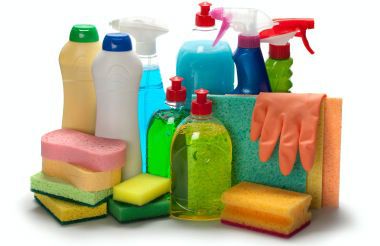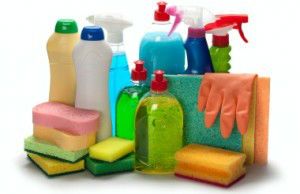
Bleach is a popular household chemical that definitely gets the job done when there is a tough job to do. However, using bleach comes with some cautions that anyone who chooses to use it should heed.
What is Bleach?
Bleach is created when an electric shock cuts through water and salt to divide the atoms. This leaves chlorine and caustic soda. When these two are combined, they create bleach. The combination is what makes bleach a substance to be used with caution.
But Isn’t Bleach Organic?
Yes, bleach comes from an organic compound, but that does not guarantee that it is non-toxic. It is the chemical reaction that occurs that creates the toxic substance. Remember, not all organic compounds are healthy, such as arsenic, which is found in the pits of many fruits, rhubarb leaves and mistletoe.
What Not to Do and What to Do
- Don’t mix bleach with ammonia. When mixed with ammonia, it creates a toxic gas that can cause lungs to stop functioning. Urine has ammonia in it, and many toilet cleaning products have bleach in them.
- Do choose a safer cleaning product when available. A safer way to clean your toilet bowl is with good old fashioned vinegar and baking soda.
- Don’t combine bleach with dish soap. Chlorine combined with dish soap creates what is known as Mustard gas. A deadly gas used in World War 1.
- Do dilute bleach with water. Use 1/4 cup bleach to 5-gallons of water. It is much safer this way and effective even for most tough jobs around the house.
- Don’t inhale bleach. When inhaled in gas form, it can cause cancer, birth defects, infertility, miscarriage, and diabetes.
- Do open a window or turn a fan on when using bleach. Always have ventilation in any room where you are using bleach. Try not to use undiluted bleach in a small space. If you are very sensitive, wear a mask over your mouth and nose.
- Don’t get bleach on your skin. It can cause chemical burns to the skin and eyes. In some cases, it can even cause frostbite.
- Do wear gloves at all time when working with bleach. If you do get bleach on your skin, wash it off immediately.
- Don’t ingest bleach. Ingesting bleach is corrosive to your gastrointestinal tract.
- Do keep bleach out of the reach of curious children and pets. Put bleach on a top shelf where it cannot be reached.
 Bleach is Found in Many Common Products
Bleach is Found in Many Common Products
Over 15,000 common household products use bleach, including cleaners, sprays, wipes, disinfectants and more. Bleach is also found in teeth whiteners, hair colors and skin whiteners.
Chlorine is used to make PVC plastics, pesticides, herbicides and pharmaceuticals. Bleach disinfects well, or city water, and is used in making artificial sweeteners such as Splenda. It is also what makes paper white. In fact, what you ‘wipe’ with, unless it is labeled “green”, very likely also contains bleach!
What can I Use Instead of Bleach?
For cleaning and household purposes, there are many alternatives to caustic bleach.
- White vinegar – for cleaning and disinfecting
- Tea tree oil – for disinfecting
- Baking soda – removal of spots and stains
- Boiling water – for disinfecting
- Hydrogen peroxide – removal of stains
- Sunlight – lightening and disinfecting
- Lemon Juice – lightener
-The Alternative Daily
Sources:
http://www.sustainablebabysteps.com/what-is-bleach.html

